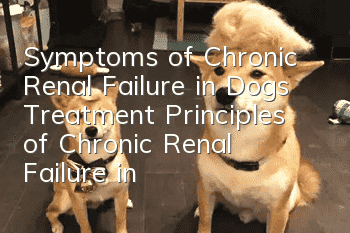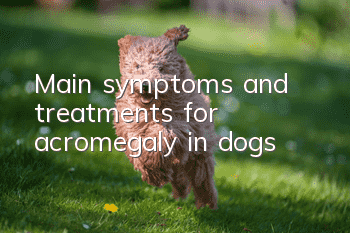Symptoms of Chronic Renal Failure in Dogs Treatment Principles of Chronic Renal Failure in Dogs!

Chronic renal failure in dogs
Chronic renal failure in dogs is one of the common diseases in aging dogs. It is a sign of the later stages of renal disease and is a progressive process. Most sick dogs die from uremic syndrome. The main functions of the kidney are excretion (such as protein metabolism waste), regulation (such as acid-base balance), and biosynthesis (such as erythropoietin). Only after the kidney tissue has been extensively destroyed, clinical symptoms are obviously exposed. Therefore, elderly dogs should pay attention to physical examination.Symptoms of chronic renal failure in dogs
It is divided into two stages: azotemia and uremia.When azotemia occurs. There may be no obvious clinical symptoms and changes in blood tests. Uremia is a multisystem poisoning syndrome with clinical symptoms related to azotemia: polyuria and thirst, anorexia and weight loss, lethargy, pale complexion, mucosal ulcers, and vomiting.
Diagnosis of chronic renal failure in dogs
During azotemia, blood test: urea concentration increases, and creatinine or other non-protein nitrogen compounds can be seen.Blood test during uremia: creatinine and urea nitrogen levels are higher, and dogs sometimes twitch.
The treatment method for chronic renal failure in dogs
The principle is special treatment + dietary therapy. Current treatment methods cannot cure renal failure, but appropriate drug treatment can improve the quality of life of sick dogs for months or even years; the purpose of dietary therapy can meet the nutritional and energy needs of sick dogs, improve the clinical symptoms of uremia, and reduce electrolytes. , vitamin and mineral disorders, thereby slowing down the process of kidney failure.When vomiting, maintain normal hydration and prevent stress by not restricting drinking water or rehydration. Give sodium bicarbonate to correct metabolic acidosis, give anabolic agents and intestinal phosphorus binders, and supply calcium and calcium triphosphate. Alcohol, oral analgesics and H2 antagonists, administration of erythropoietin, anticonvulsants, drugs that are not necessarily toxic to the kidneys, and antihypertensive treatment.
Adjust food composition, including phosphorus, protein, calcium, sodium, zinc, water-soluble vitamins, and energy and fat.
Nitrogenous renal failure, it is recommended to drink free water and normal protein intake; phosphorus + phosphorus binders are limited; sodium is limited; potassium supply to prevent excess potassium; plasma bicarbonate is maintained by alkalinization; risk Good veterinary food and Paulo Low Phosphorus. Give Pulsatilla a medium-protein diet.
When uremic renal failure occurs, it is recommended to drink water freely, limit protein intake, limit phosphorus ± phosphorus binders, supply potassium, alkalize to maintain plasma bicarbonate, consider erythropoietin in anemia, consider vitamin D2; according to uremia Depending on the severity of the disease, give Xianhao veterinary food, Baolu low phosphorus and low protein diet, or Baolu low phosphorus medium protein diet.Food therapy can prolong the life and improve the quality of life of dogs with chronic renal failure, because the symptoms of chronic renal failure change dynamically, and regular monitoring (blood and urine nitrogen, creatinine, phosphorus, parathyroid hormone, potassium, specific volume, Plasma albumin and total protein) and physical examination are important components of treatment, and dietary therapy and medication shouldDepends on the condition.
Random articles
- How to choose a Giant Alaskan puppy?
- Dogs can also suffer from the "three highs" disease of wealth. How to prevent it?
- Is the Doberman Pinscher aggressive?
- What causes black dog hair to turn white?
- What causes tears in dog eyes?
- Dog sepsis symptoms
- Should I shave all my dog’s fetal hair when shaving it for the first time?
- What should I do if my dog eats less in hot weather?
- Why does a dog fart loudly?
- Can French cattle eat pineapple?



